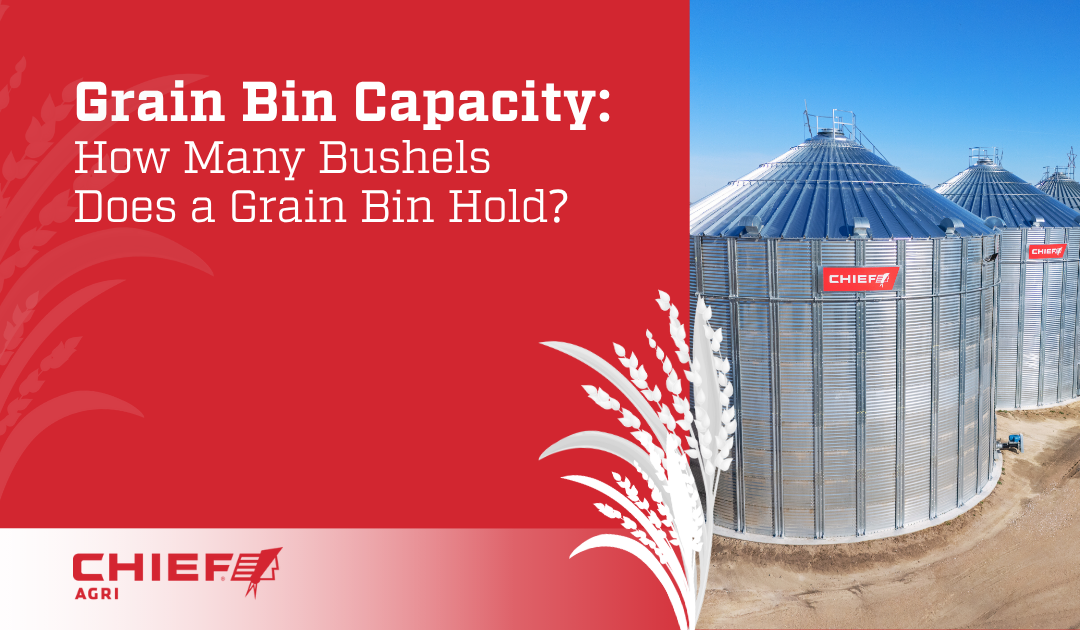Understanding the Factors That Impact Grain Bin Capacity
Effective grain storage is key to a successful harvest and a profitable season. For any farming or agricultural operation, accurately understanding your grain bin capacity is absolutely vital. When you know how much your bins can hold, you can plan more effectively, manage your inventory precisely, and ultimately, get the most out of your storage investment.
Since 1961, Chief Agri has been a top provider of grain storage equipment solutions, offering a wide range of grain bins to fit various agricultural needs. We get that knowing the bushel capacity of grain bins isn’t just a number—it’s absolutely fundamental to running an efficient farm. Let’s dive into the specifics of grain bin capacity and figure out exactly what determines how many bushels a grain bin can hold.
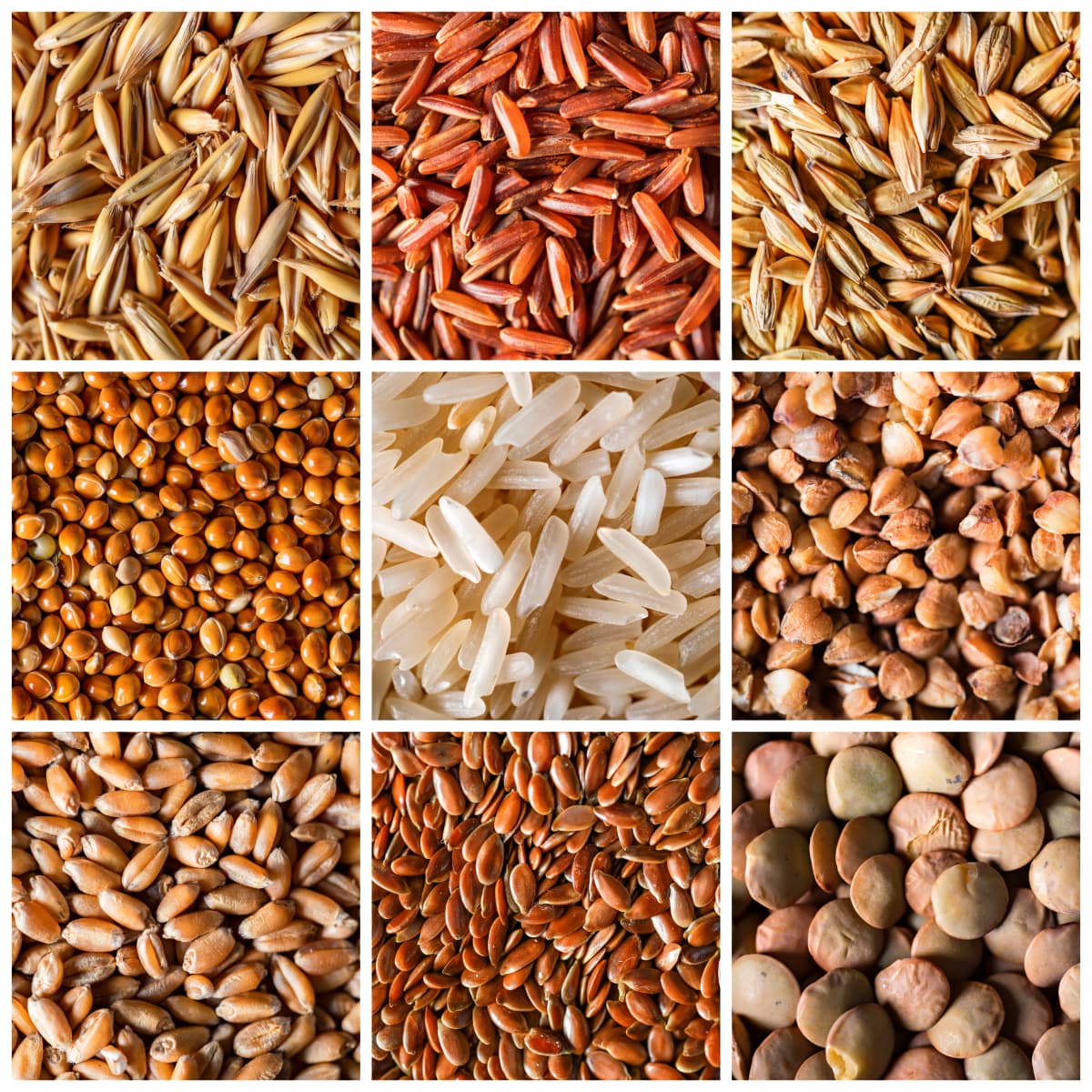
The Basics of Agricultural Units: What is a Bushel?
Before we dive into specific grain bin capacities, let’s quickly clarify what a bushel actually is. A bushel is a standard agricultural measurement of volume, not weight. Here in the United States, one bushel is about 1.244 cubic feet.
While a bushel is a set volume, its weight changes depending on the type of grain. For instance:
- A bushel of corn usually weighs around 56 pounds.
- A bushel of soybeans typically comes in at about 60 pounds.
- A bushel of wheat is also commonly around 60 pounds.
This distinction matters because while your bin’s capacity is measured in bushels (volume), the actual weight of the grain it holds will vary by commodity. Keep in mind that tools like a bushel volume calculator primarily focus on that volumetric capacity.
For international growers and those working with global markets, it’s often more practical to think in terms of metric tons. To convert bushels to metric tons, you’ll need to consider the specific grain’s weight per bushel:
- For barley (48 lbs/bushel): To convert bushels to metric tons, multiply the number of bushels by 0.021772. (e.g., 100 bushels of barley × 0.021772 = 2.18 metric tons)
- For corn (56 lbs/bushel): To convert bushels to metric tons, multiply the number of bushels by 0.0254. (e.g., 100 bushels of corn × 0.0254 = 2.54 metric tons)
- For wheat or soybeans (60 lbs/bushel): To convert bushels to metric tons, multiply the number of bushels by 0.0272155. (e.g., 100 bushels of wheat × 0.0272155 = 2.72 metric tons)
These conversions are crucial for international trade and for standardizing measurements across different regions. Knowing both your bushel and metric ton capacity provides a complete picture for your grain storage planning. Online tools like this online grain unit converter let you quickly convert grain weights into different units.

How to Determine the Grain Bin Capacity in Bushels
When you’re looking at grain bin capacity in bushels, you’ll see that manufacturers always provide this specification for their bins. This listed grain bin bushel capacity is an important number to consider when you’re making a purchasing decision. However, it’s also key to understand the different factors that play into this figure:
- Grain bin sizes and capacities: The diameter and height of the grain bin are the main factors that determine its capacity. Larger diameter and taller bins will naturally hold more bushels.
- The type of grain being stored: Even though a bushel is a unit of volume, the bulk density of different grains can subtly change how they fill a space. For example, a lighter, less dense grain might take up the same volume as a heavier one but weigh less overall.
- The level of fill: You’ll rarely fill a grain bin to its absolute top. There’s usually some empty space left for safety and operational reasons. The stated capacity typically refers to a standard, level fill.
- The presence of a peaked top: Many grain bins feature a peaked roof. While this adds to the bin’s total volume, the practical, usable capacity is often calculated based on a level fill line that sits below that peak.
The typical bushel capacity of a grain bin can vary quite a lot. Smaller bins for on-farm storage might hold only a few thousand bushels, whereas massive commercial storage facilities can have bins designed to hold over a million bushels. To give you a better idea, let’s look at some common sizes.
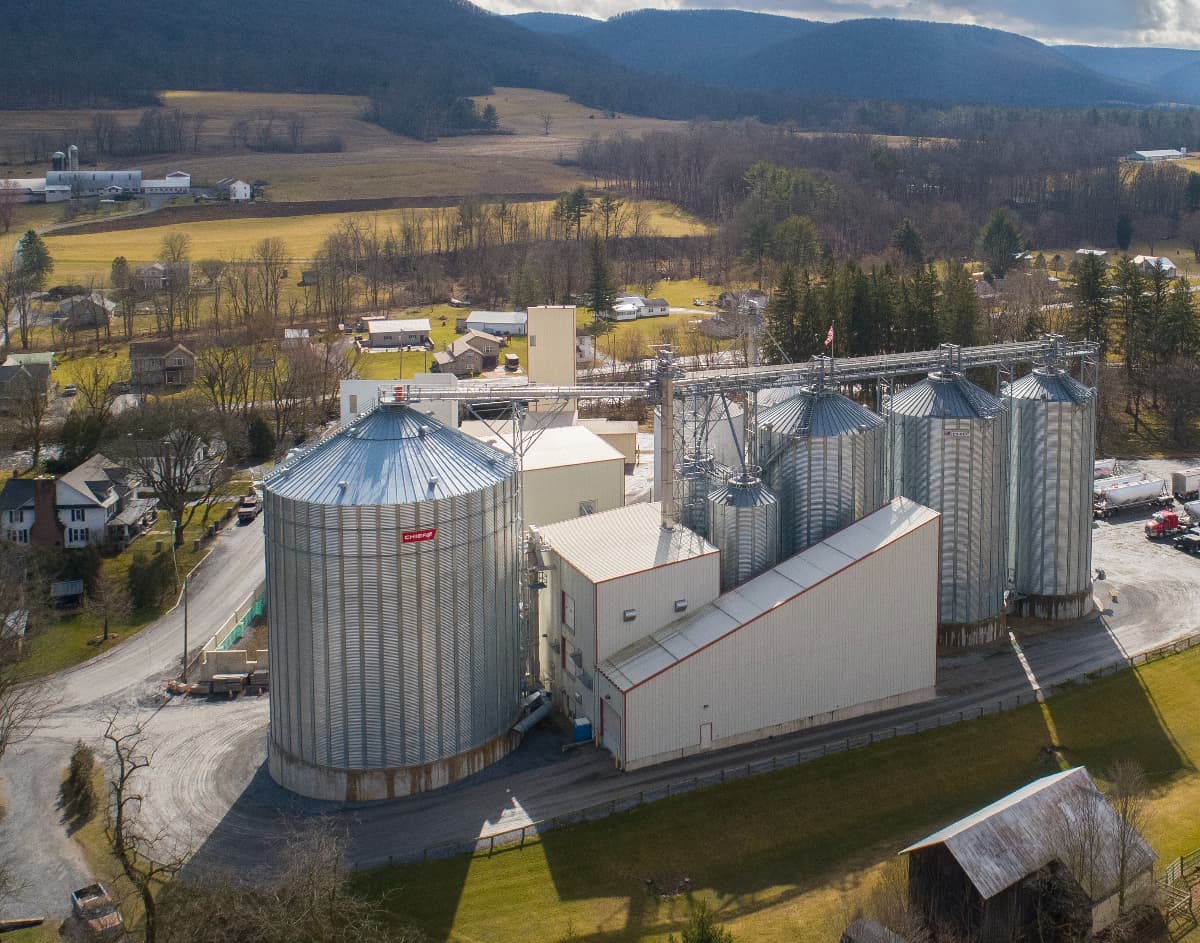
Common Grain Bin Sizes and Their Approximate Capacities
It’s difficult to give exact figures without knowing specific manufacturer models and heights, but here are some general examples of grain bin sizes and capacities to illustrate the typical range:
- 15-foot diameter bins: These smaller bins are often used for on-farm storage. Depending on their height, they can hold anywhere from about 1,500 to 10,000 bushels.
- 30-foot diameter bins: This is a common size for mid-sized farming operations. These bins can typically hold between 10,000 and 50,000 bushels, again, varying with height.
- 48-foot diameter bins: If you’re looking at larger on-farm or smaller commercial bins, this size range can offer capacities starting at 30,000 bushels and potentially going over 100,000 bushels with significant height.
Manufacturers provide detailed grain bin capacity charts that will give you the precise grain bin bushel capacity for their different models, based on diameter and sidewall height. There are online bushel volume calculator tools that can give you reasonable estimations based on a bin’s dimensions. If you’re wondering how many bushels different-sized grain bins can hold, these resources can help you determine your bin’s capacity.
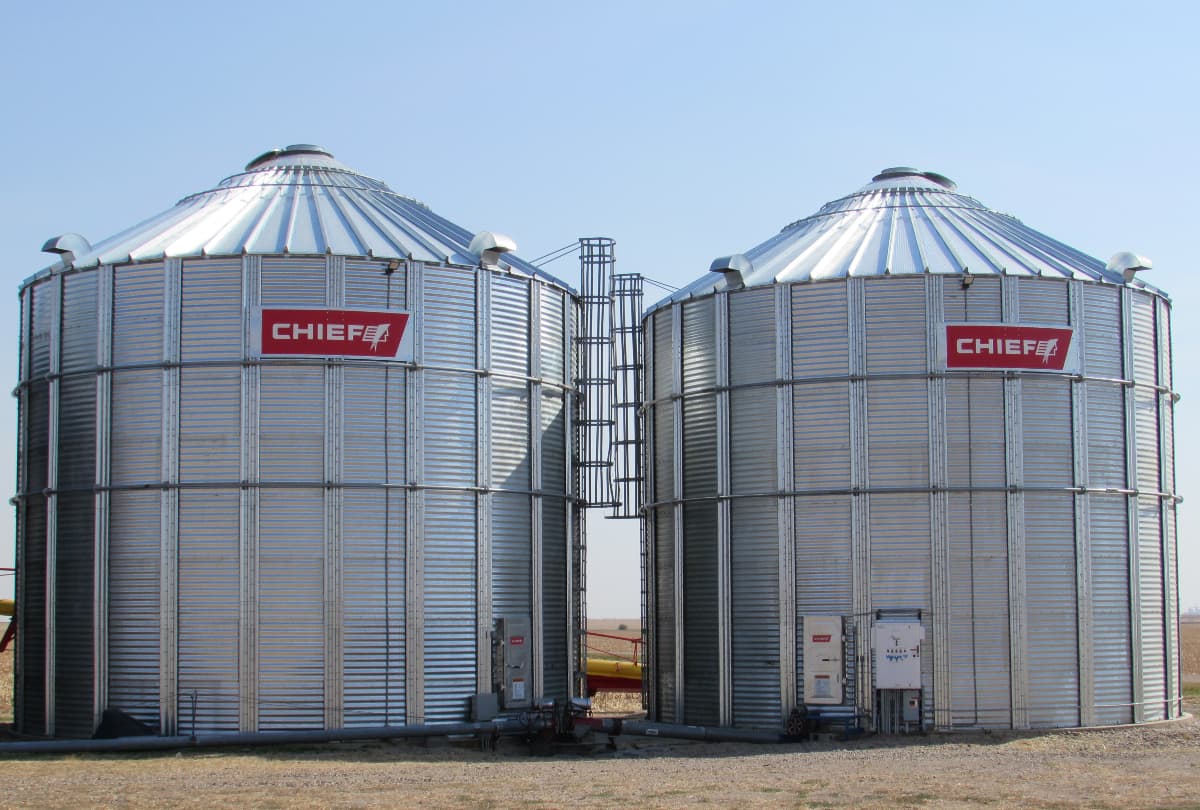
Factors That Can Affect Actual Grain Storage Capacity
While the stated grain bin capacity gives you a theoretical maximum, several real-world factors can influence how much grain you can actually store effectively:
- Moisture content of the grain: Grain with higher moisture can swell and pack differently. This might affect the overall volume it takes up and its weight per bushel.
- Foreign material and dockage: If there’s foreign material like weeds or debris in your harvested grain, it takes up valuable space in the bin, reducing the amount of actual grain you can store.
- Grain packing and settling over time: Over time, grain tends to settle and compact within the bin. While this might allow you to add a little more grain later, your initial fill will be based on its un-settled volume.
- The shape of the bin floor: Whether you have a flat-bottom bin or a conical-bottom bin, their discharge characteristics differ, and this can slightly affect the usable capacity depending on how the grain settles.
- Aeration systems and their impact on usable space: Aeration floors and systems inside the bin are crucial for maintaining grain quality. However, they take up a small amount of space, slightly reducing the total volume available for grain.
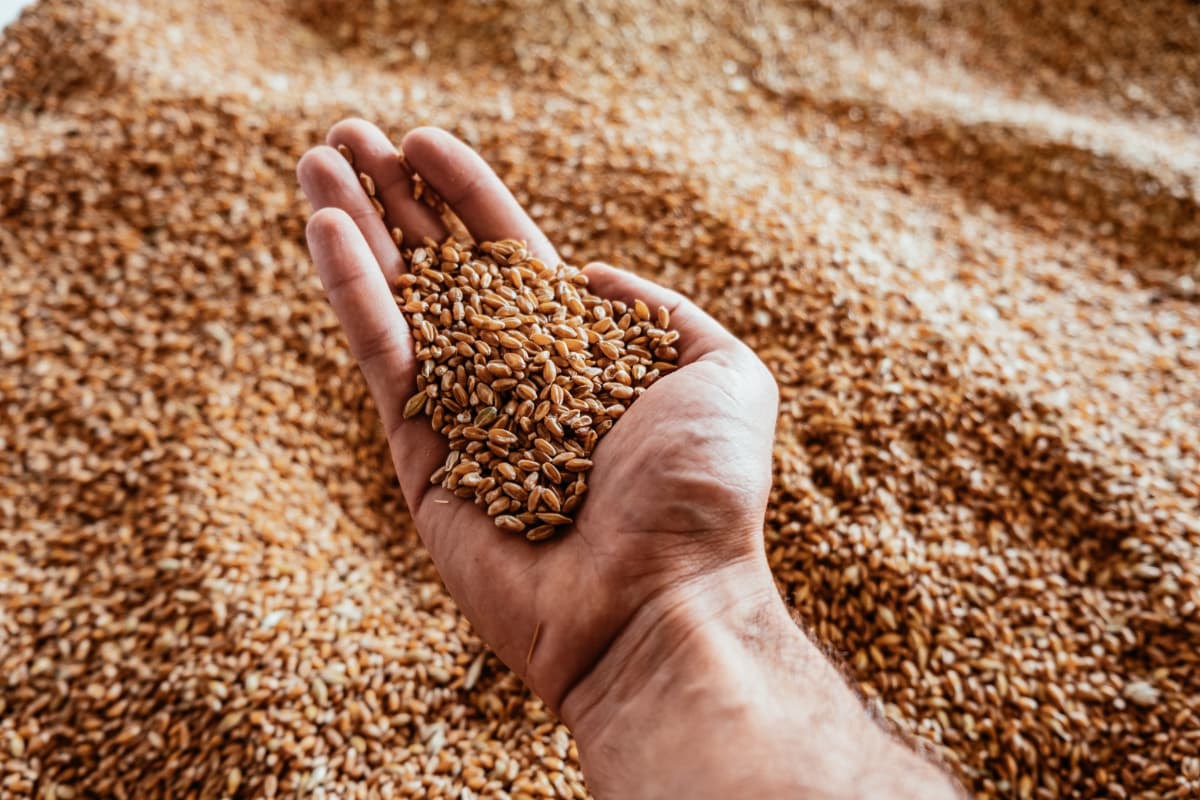
Using a Grain Bin Bushel Capacity Calculator
A bushel volume calculator is a helpful tool for estimating the bushel capacity of grain bins. Typically, these calculators require you to input the bin’s diameter and height. They then use the formula for the volume of a cylinder (since most grain bins are cylindrical) and apply a conversion factor to translate cubic feet into bushels (approximately 0.8 bushels per cubic foot).
Some more advanced calculators might allow you to specify the type of grain, which can provide a more nuanced estimate based on average bulk densities. However, it’s crucial to remember that these calculators provide estimations. For the most accurate grain bin capacity figures, always refer to the manufacturer’s specifications for the specific bin model.
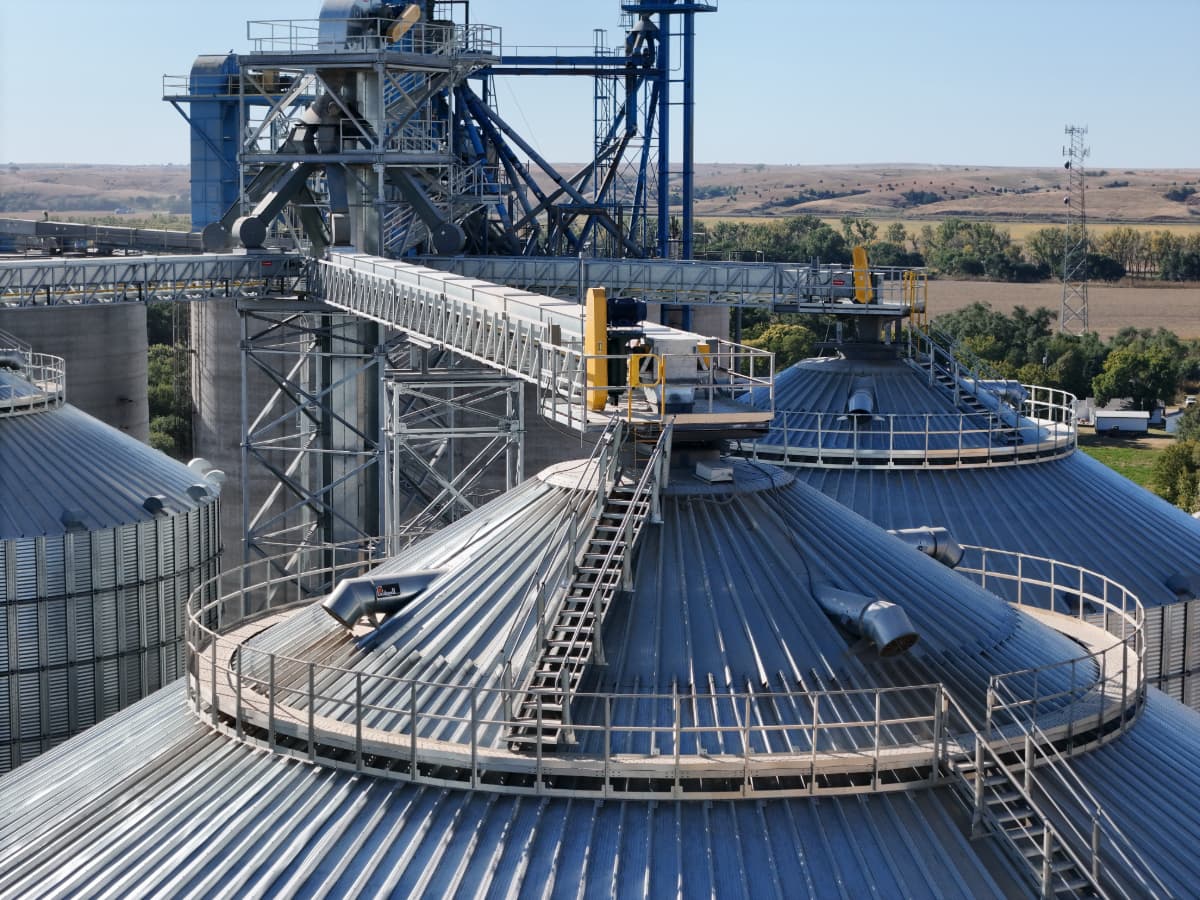
Why Knowing Your Grain Bin Capacity Matters
Understanding your grain bin capacity isn’t just about knowing how much grain you can store. It’s about making informed decisions that positively impact your entire operation:
- Efficient Storage Planning and Logistics: Knowing your bin capacities lets you plan your harvest logistics effectively. This ensures you’ll have ample storage space for your anticipated yields.
- Accurate Inventory Management: Precise capacity figures are key to maintaining accurate inventory records. This is crucial for tracking stored grain and making smart marketing decisions.
- Informed Grain Marketing and Sales Decisions: When you know exactly how much grain you have on hand and your storage capacity, you can strategically plan your sales and take advantage of market opportunities.
Avoiding Overfilling, Damage, or Loss: Overfilling a grain bin can lead to structural damage, spoiled grain, and safety hazards. Understanding your capacity helps you prevent these costly issues.

Partner With Chief Agri for Grain Storage Solutions
Grain bin capacity isn’t a single, fixed number; it’s a range primarily influenced by the specific bin sizes and capacities you choose. To accurately determine how many bushels a grain bin can hold, it’s important to understand what a bushel represents, how to interpret manufacturer specifications, and how to use tools like a bushel volume calculator. Also, remember that factors beyond just the bin’s dimensions can also impact the amount of grain you can store.
Chief Agri has been a trusted partner for farmers for over 60 years, providing high-quality grain storage equipment, including a comprehensive range of grain bins in sizes for both farm and commercial use. We understand the importance of accurate capacity information for efficient and profitable grain handling.
Contact Chief Agri today to discuss your grain storage needs and find the right size bin to maximize your operation’s efficiency.

